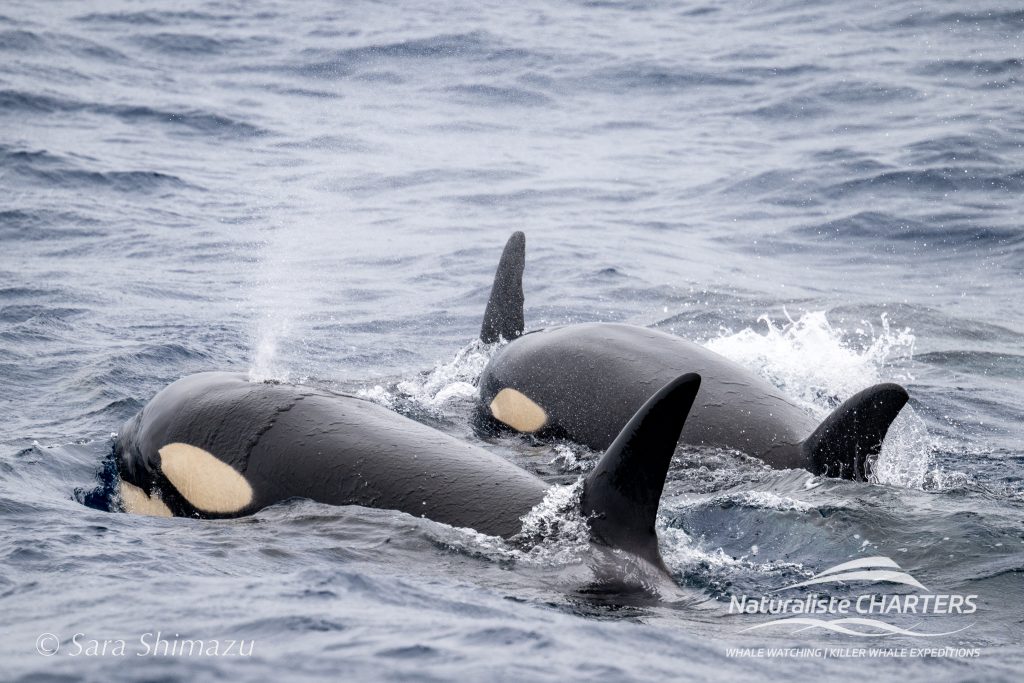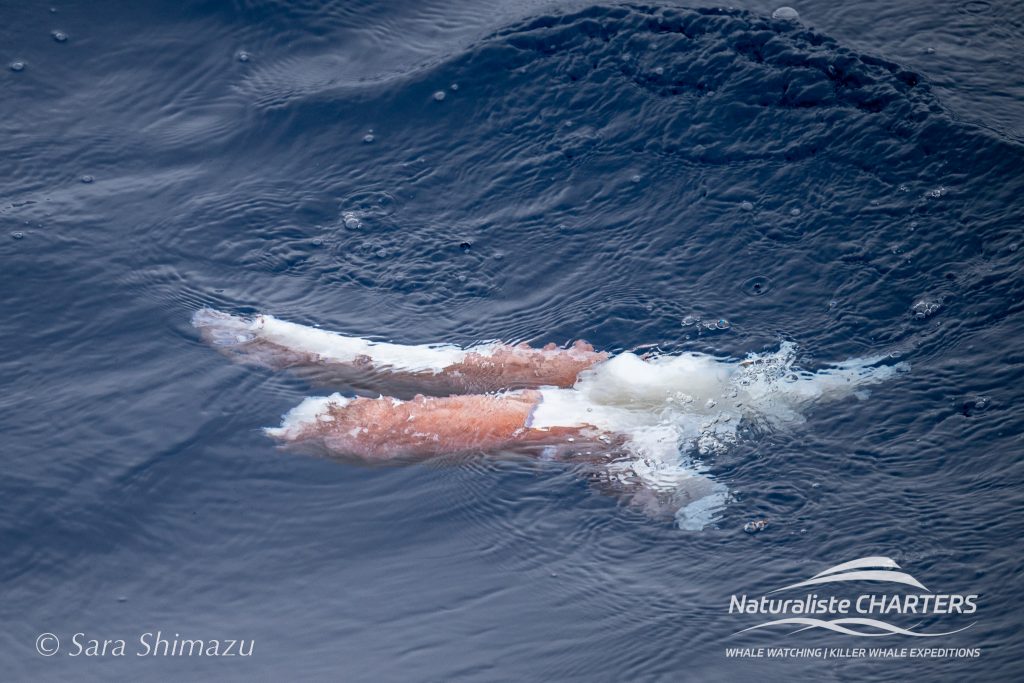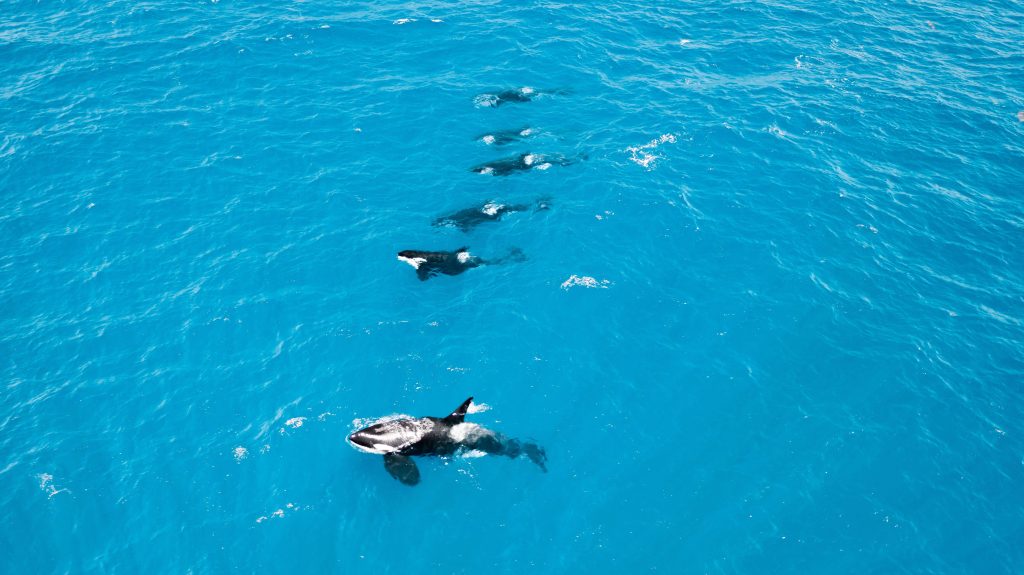Killer whales, also known as orcas, are apex predators with a varied and fascinating diet.
Their feeding habits and techniques highlight their intelligence, adaptability, and social cooperation, making them one of the ocean’s most efficient hunters.
Here, we dive into what killer whales eat and how they catch their prey.
What Do Killer Whales Eat?
Orcas are carnivorous, and their diet depends on their ecotype and geographical location. Broadly, their diet includes:
Marine Mammals:
Certain orca populations prey on seals, sea lions, dolphins, and other whale species. They have been observed targeting calves of species like blue whales and humpback whales.
Fish:
Many orcas specialise in eating fish, with salmon (particularly Chinook salmon) being a staple for some populations, such as those in the Pacific Northwest.
Squid and Octopus:
In some regions, killer whales consume squid and other cephalopods.
Seabirds and Turtles:
Though less common, orcas occasionally feed on seabirds and turtles.
Sharks and Rays:
Orcas have been known to prey on sharks, including great whites, by targeting their liver, a nutrient-rich organ.
Penguins:
In Antarctic waters, some orcas hunt penguins as part of their diet.
How Do Killer Whales Hunt?
Killer whales employ various hunting techniques, often showcasing remarkable intelligence and teamwork. Below are some of their key strategies:
Pod Cooperation:
Orcas hunt in pods, using their numbers to outsmart prey. They coordinate movements, trap prey, and take turns feeding. This teamwork is particularly evident when hunting large prey like whales.
Wave-Washing:
To hunt seals resting on ice floes, orcas create waves by swimming in unison. These waves wash the seal into the water, where the orcas can catch it.
Beaching:
In some regions, orcas temporarily strand themselves on beaches to snatch seals. This risky technique requires skill and precise timing.
Tail Slapping:
Orcas use powerful tail slaps to stun fish or knock birds off the water’s surface, making them easier to catch.
Encircling Prey:
When targeting schools of fish, orcas use bubbles, body movements, or sound to herd the fish into tight balls, allowing easier feeding.
Strategic Bites:
When hunting large prey like sharks or whales, orcas target specific body parts. For example, they may immobilise sharks by flipping them upside down, inducing tonic immobility.

How Do Killer Whales Eat Their Prey?
Killer whales have a unique way of consuming their prey.
Unlike some predators, their jaws are not designed for chewing or biting through tough materials.
Instead, orcas use the following techniques:
Tearing and Swallowing:
Orcas use their powerful teeth to tear chunks of flesh from their prey, swallowing these pieces whole.
Shaking Prey:
When hunting larger animals, they often shake their prey violently to break it into manageable pieces. This behaviour is commonly observed with marine mammals and fish.
Specialised Feeding:
Some orcas have developed a taste for specific parts of their prey. For instance, when hunting sharks, they target the liver, which is rich in nutrients and oils.
Using Water:
In some cases, orcas hold prey near the surface, letting water pressure assist in breaking it apart. This is often seen with softer-bodied prey like squid.
Their feeding behaviour is both efficient and adapted to their physical limitations, ensuring they maximise energy intake while minimising effort.

What Regional Specialisations Do Orca Exhibit?
Orcas exhibit dietary specialisation based on their ecotype:
Resident Orcas:
Found in the Pacific Northwest, these orcas primarily eat fish, especially salmon.
Transient Orcas:
Also known as Bigg’s orcas, they focus on marine mammals and are known for their stealthy hunting.
Offshore Orcas:
These orcas are believed to feed on fish and sharks, including species with tough skin.
Bremer Canyon Orcas:
The Orca found in the Bremer Canyon during Naturaliste Charters expeditions have been seen to feed on giant squid, fish and beaked whales, also whale species like blue whales calves and minke whales.
Antarctic Orcas:
Some Antarctic orcas hunt seals and penguins, while others feed on fish or toothfish.
What is the Importance of Orca Feeding and Social Bonds?
Killer whales’ hunting and feeding behaviours play a crucial role in maintaining and strengthening social bonds within their pods.
These highly social marine mammals often work collaboratively during hunts, using sophisticated strategies to catch prey.
Once the prey is captured, they share the meal among pod members, fostering cooperation and mutual reliance.
This sharing is particularly important for younger orcas, as it provides an opportunity for them to learn essential hunting techniques through observation and practice.
Such cultural transmission of knowledge, where skills and behaviours are passed down through generations.
It is exceptionally rare in the animal kingdom and highlights the orcas’ remarkable intelligence.
Additionally, these shared activities reinforce trust and unity within the pod, contributing to the long-term survival and stability of their tightly knit social structure.
The importance of feeding and social bonds among orcas cannot be overstated, as it forms the foundation of their cultural identity and ecological success.

Bremer Bay Offers The Best Opportunity To See Killer Whales
Killer whales’ diet and hunting strategies are as diverse as their habitats.
Whether working together to take down large prey or using specialised techniques for smaller meals, orcas are true masters of the marine food web.
Witnessing these incredible behaviours is a highlight of any killer whale expedition, and Bremer Bay offers one of the best opportunities to see them in action.
To find out more about Killer Whales access more of our blogs here or visit whales.org
To learn more and join a tour, visit Legend Charters Booking.














